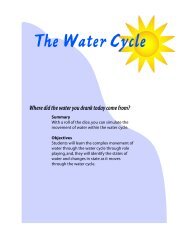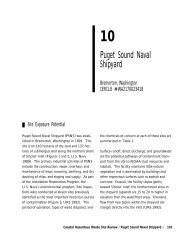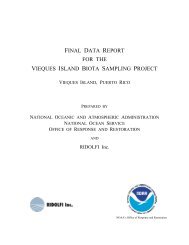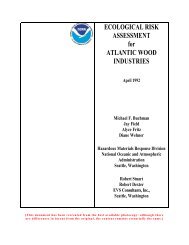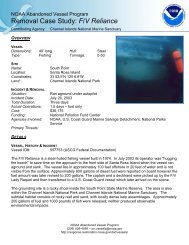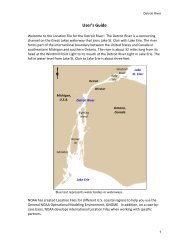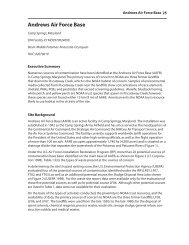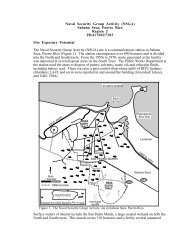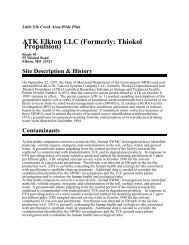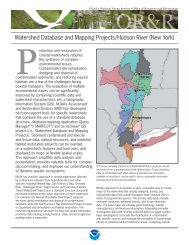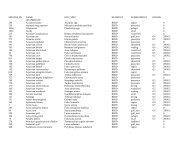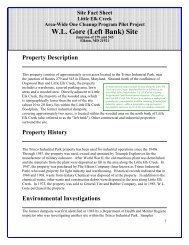The Coastal Resource Coordinator's Bioassessment Manual
The Coastal Resource Coordinator's Bioassessment Manual
The Coastal Resource Coordinator's Bioassessment Manual
You also want an ePaper? Increase the reach of your titles
YUMPU automatically turns print PDFs into web optimized ePapers that Google loves.
HAZMAT 93-1–Toxicity Tests<br />
Testing Water, Soil, or Sediment<br />
Toxicity tests have been developed that<br />
expose test organisms to water, soil, or<br />
sediment. In water toxicity tests, the<br />
test organisms are placed directly in a<br />
sample of the water of concern.<br />
However, there are four different<br />
exposure scenarios for soil or sediment<br />
toxicity tests. First, organisms can be<br />
exposed to whole, intact soil or<br />
sediments ("bulk sediment" or the "solid<br />
phase") with, in the case of sediments,<br />
overlying clean water. Second, they can<br />
be exposed to soil or "sediment<br />
elutriate" where clean water is mixed<br />
with the test material. <strong>The</strong> mixture is<br />
then either allowed to settle or is<br />
centrifuged and the water phase is<br />
poured off to become the test sample.<br />
This elutriate sample contains the<br />
"suspended phase" if it still contains<br />
particulates, or is the "liquid phase" if<br />
the particulates have been removed by<br />
centrifugation or filtration.<br />
<strong>The</strong> third scenario is exposing<br />
organisms to soil or sediment extracts,<br />
Table 3-2. Steps in toxicity test selection.<br />
DEFINE TEST OBJECTIVES<br />
DETERMINE ECOSYSTEM TYPE<br />
Terrestrial<br />
Freshwater<br />
Brackish (Estuarine)<br />
Marine<br />
DETERMINE MATRIX TO BE TESTED<br />
Soil<br />
Water<br />
Sediment<br />
Bulk<br />
Elutriate<br />
Extract<br />
Pore Water<br />
DETERMINE TYPE OF TEST DESIRED<br />
Acute<br />
Chronic<br />
SELECT TEST ORGANISM<br />
DEFINE ENDPOINTS TO BE OBSERVED<br />
Death<br />
Growth<br />
Reproduction<br />
Etc.<br />
using a chemical extraction procedure similar to that used for sediment chemistry analyses.<br />
This extraction process isolates specific classes of contaminants (neutral, non-ionic organic<br />
compounds) while failing to extract others (metals and highly acidic and basic organic<br />
compounds). <strong>The</strong> fourth, relatively new technique involves exposing organisms to the<br />
interstitial or pore water present in a sediment sample. Pore water can be collected from<br />
wet bulk sediment through the use of centrifuges, squeezers and filters, or dialysis<br />
chambers. After the pore water is collected, water toxicity tests can be used. Although<br />
3-5 August 1997



